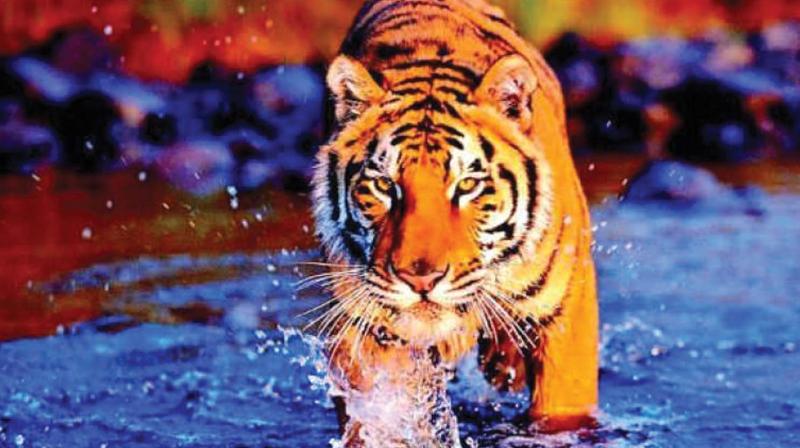Kerala: Now, tigers to get Unique Identification Number
Move to create National Repository of Camera Trap Photographs of Tigers.

THIRUVANANTHAPURAM: Like the citizens of the state, tigers in Kerala too will possess a unique identification number. This number, called Unique Tiger Identification (UTID) number, will start with the alphabets KE (denoting Kerala). Providing an Aadhaar-like number for the national animal is part of National Tiger Conservation Authority’s efforts to create a National Repository of Camera Trap Photographs of Tigers (NRCTPT). “We have set up camera traps in Parambikulam and Periyar tiger reserves with the help of World Wide Fund for Nature (WWF). In Wayanad, we have set up camera traps with the assistance of Wildlife Conservation Society (WCS) founded by Ullas Karanth,” a top Forest Department source said.
He said that National Tiger Conservation Authority (NTCA) was in the process of creating a country-wide database of wild tigers with the help of government departments and NGOs like WWF and WCS. A major objective of the project is to avoid multiple counting of tigers which freely moves across borders. “This was a major problem when we were using the pug-mark tiger census method,” a top NTCA official said. The pug-mark method was abandoned in 2006. “The camera-trap pictures will have to be authenticated using strict protocols by a hierarchy of officers, right up to the chief wildlife warden, before being sent to the central repository,” the Forest Department official said. The state Forest Department is in the process of analysing its camera-trap images.
Since camera-trapping is scientifically advanced, it will in the long run help in establishing near accurate numbers of wild cats and the prey population in the wilds of the country. Moreover, the database will render monitoring easier. “Tigers are identified using their unique stripe patterns and then given a unique identification number. Since we possess highly evolved matching softwares, duplication will be avoided,” the official said. The database is also expected to give foresters the necessary input for the right conservation decisions, especially in relation to poaching and man-animal conflicts.

